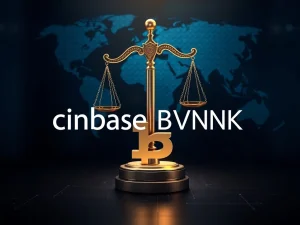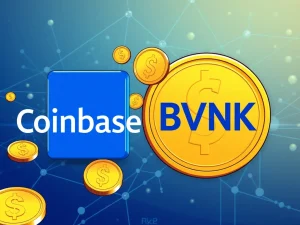Revolutionary Tokenized Money Market: Goldman Sachs & BNY Mellon Reshape $7 Trillion Finance

Imagine a world where your traditional financial assets, like money-market shares, can move with the speed and efficiency of digital currencies. This isn’t a distant dream; it’s rapidly becoming a reality. The financial landscape is witnessing a groundbreaking shift as major players like Goldman Sachs and BNY Mellon collaborate to tokenize money-market shares, signaling a transformative era for the colossal $7 trillion industry. This move isn’t just about digitizing paper; it’s about fundamentally enhancing how institutional investors manage and utilize their cash assets, setting a new precedent for the future of finance. The potential for the Tokenized Money Market is immense, promising efficiency and new utility.
The Revolutionary Tokenized Money Market Explained
The recent collaboration between Goldman Sachs Group Inc. and Bank of New York Mellon Corp. marks a pivotal moment in finance. This initiative allows institutional investors to access digital representations of shares in 2a-7-regulated money-market funds. What does this mean in practical terms? It means maintaining the robust regulatory oversight of traditional frameworks while significantly expanding the utility of cash assets in the digital realm.
- Who’s Involved? BNY Mellon will oversee fund records and settlements, ensuring compliance with existing stringent investment safeguards. Major fund providers like BlackRock, Dreyfus, Federated Hermes, Fidelity, and Goldman Sachs, collectively managing 46% of taxable money-market assets, are part of this pioneering effort.
- Why Now? JPMorgan Chase & Co. strategists describe this as a ‘significant leap forward,’ driven by the growing interest in leveraging blockchain’s potential to modernize financial infrastructure. This move aims to bolster money funds’ competitiveness against stablecoins and unlock novel applications.
Blockchain in Finance: Unlocking New Efficiencies
The integration of blockchain technology into traditional finance is no longer a fringe concept; it’s a strategic imperative. Institutions are actively exploring digital-asset use cases to tackle long-standing inefficiencies within legacy systems. Think about the challenges: delayed settlements, opaque ownership tracking, and limited operating hours. Blockchain offers compelling solutions.
- Real-Time Liquidity: By tokenizing assets, the industry aims for instant liquidity, enabling quicker access to funds.
- 24/7 Settlement: The promise of round-the-clock settlement capabilities means operations can run continuously, removing traditional banking hours as a barrier.
- Streamlined Operations: For institutional clients, this translates to more efficient and less cumbersome processes for managing large asset portfolios.
This push for a more agile financial ecosystem underscores the transformative power of Blockchain in Finance, paving the way for a more connected and responsive global market.
The Rise of Institutional Digital Assets
Wall Street’s embrace of digital assets extends beyond just money-market funds. The broader trend includes banks exploring ‘deposit tokens’ and even venturing into crypto loan programs. This growing interest highlights a strategic shift towards integrating digital assets into core financial services. JPMorgan, for instance, has demonstrated its commitment by hiring key talent like George Giatrakos, signaling an expansion of its digital-asset footprint.
While challenges like regulatory clarity and standardized frameworks persist, the commitment from major players indicates a clear direction. The goal is to leverage the unique properties of digital assets – their programmability, immutability, and global reach – to create more robust and efficient financial products for institutional clients. This focus on Institutional Digital Assets is reshaping how large financial entities view and interact with the digital economy.
Real World Asset Tokenization: The Future of Collateral
One of the most exciting applications highlighted by JPMorgan strategist Teresa Ho is the potential for tokenized money-market shares to replace traditional collateral. Imagine using digital representations of these shares instead of physical cash or Treasury bonds for margin requirements, all without sacrificing interest income. This underscores the incredible versatility and utility of this new asset class.
This concept, known as Real World Asset Tokenization, is gaining significant traction. It allows illiquid or traditionally hard-to-transfer assets to be represented on a blockchain, making them divisible, easily transferable, and verifiable. For money funds, this means unlocking new avenues for capital efficiency and risk management, making them more attractive in a competitive financial landscape.
What This Means for Goldman Sachs BNY Mellon and Beyond
The collaboration between Goldman Sachs BNY Mellon is not just an isolated event; it’s a strategic step towards a more integrated future where tokenized assets are a standard component of traditional finance. This initiative aligns with recent legislative developments, such as the GENIUS Act, which provides a framework for stablecoin regulation requiring 1-to-1 backing with high-quality assets, further legitimizing the sector.
JPMorgan’s analysis stresses the urgency for innovation. Despite significant inflows into money funds in 2025, driven by the Federal Reserve’s policies, strategists warn that inaction could erode cash’s traditional dominance. As State Street Global Advisors’ CEO Yie-Hsin Hung noted, ‘Cash will lose its crown’ if the industry fails to adapt. This partnership could set a powerful precedent for broader adoption, ultimately reshaping global capital markets through enhanced efficiency and accessibility.
The convergence of traditional finance and blockchain technology is accelerating, driven by the need for greater efficiency, transparency, and liquidity. The pioneering efforts by Goldman Sachs and BNY Mellon to tokenize money-market shares represent a monumental leap forward, demonstrating the tangible benefits of blockchain for institutional finance. As regulatory frameworks evolve and technological capabilities advance, we can expect to see an increasing integration of digital assets into the core of global financial systems, paving the way for a truly transformed and interconnected financial future.
Frequently Asked Questions (FAQs)
What is Tokenized Money Market?
A Tokenized Money Market refers to the process of converting shares of traditional money-market funds into digital tokens on a blockchain. This allows for digital representation and transfer of these assets, combining the stability of money markets with the efficiency and transparency of blockchain technology.
How does this collaboration benefit institutional investors?
Institutional investors gain several benefits, including enhanced liquidity, the potential for 24/7 settlement, and the ability to use these tokenized shares as collateral for margin requirements, potentially replacing traditional assets like cash or Treasuries without losing interest income. It also streamlines operations and reduces inefficiencies.
What role does blockchain play in this transformation?
Blockchain technology provides the underlying infrastructure for tokenization, enabling secure, transparent, and immutable record-keeping. It facilitates real-time transfers, automates processes through smart contracts, and enhances the overall efficiency of managing and trading financial assets.
Is this a threat to traditional stablecoins?
JPMorgan analysts suggest that tokenized money-market shares could enhance the competitiveness of money funds against stablecoins. While stablecoins serve a different purpose (often as a bridge between fiat and crypto), tokenized money funds offer a regulated, interest-bearing alternative for institutional cash management within a digital framework.
What are the main challenges for broader adoption?
The primary challenges include achieving greater regulatory clarity across different jurisdictions, developing standardized frameworks for tokenization and digital asset management, and ensuring interoperability between various blockchain networks and existing financial systems.
How does the GENIUS Act relate to this initiative?
The GENIUS Act is a legislative framework focused on stablecoin regulation, requiring 1-to-1 backing with high-quality assets. Its passage helps legitimize the broader digital asset sector and provides a clearer regulatory environment, which indirectly supports initiatives like the tokenization of money-market shares by establishing precedents for digital asset oversight.







